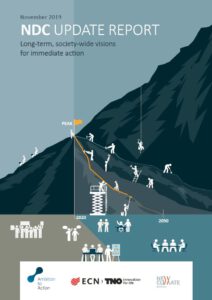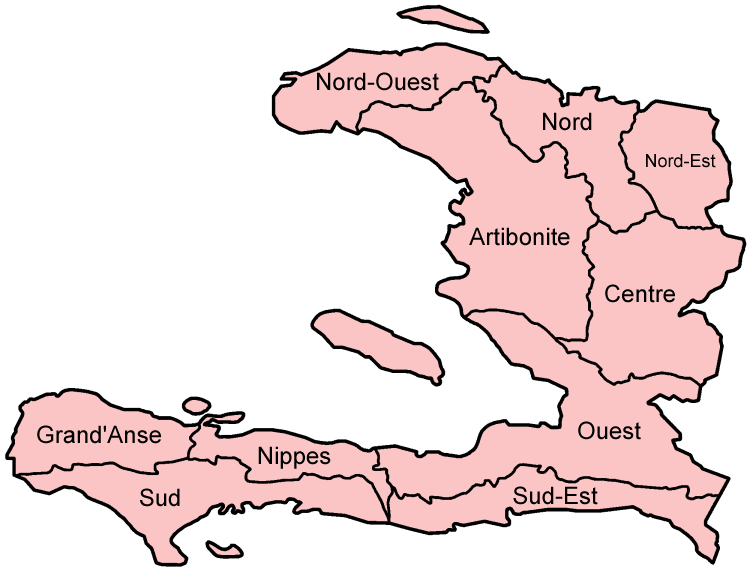Alexander Ochs, Re|Volt, 16 March 2012
Last Sunday marked the first anniversary of an unprecedented catastrophe that struck northern Japan. On March 11, 2011, a tsunami—triggered by a major earthquake—swept into the area surrounding the Fukushima Daiichi nuclear power station, disabling the cooling capabilities of three of the plant’s oldest reactors. In the days and weeks that followed, as workers struggled to cool and dismantle the plant, reactors 1, 2, and 3 went into meltdown. A series of explosions and fires led to the release of radioactive gas, and fears of contamination ultimately prompted the evacuation of approximately 100,000 people from the immediate area; some 30,000 may never be able to return to their homes.

- The Fukushima Daichi Nuclear Power Plant, 25 March 2011 (Source: econews)
The first anniversary of this horrific event—the worst nuclear disaster since the Chernobyl accident in 1986—is a time to commemorate the more than 20,000 people who died in the initial earthquake and tsunami, as well as the courage of those who risked radioactive exposure to regain control of the plant and prevent further calamity. But it is also a time to look forward—to examine what we have learned from Fukushima and what it means for the future of energy in Japan and around the world.
A “moment of opportunity” for Japan
In the aftermath of the meltdown, the Japanese public turned decidedly against nuclear power, marking a pronounced change in a nation that was once one of the world’s most committed proponents and producers of civilian atomic energy. Japan has been using nuclear power since the 1960s, and in 2010 it generated 30 percent of its electricity from nuclear plants. In the past year, however, the vast majority of nuclear facilities in Japan have been shut down for routine maintenance or “stress tests” and have not yet been reopened. Today, all but two of Japan’s commercial reactors have been shut down, with the last one scheduled to go offline as early as April. The country has also abandoned any existing plans to build new reactors.
How has Japan managed to make up the sudden shortfall in electricity production? Mostly by implementing an aggressive campaign to reduce energy consumption and increase production from conventional power plants. But that clearly won’t be enough to sustain the country’s energy needs in the long term. Many of Japan’s nuclear facilities are likely to be reopened at some point. Prime Minister Yoshihiko Noda favors restarting some of them as soon as possible to increase electricity production, particularly in the summer months when demand goes up. But Japan also intends to fundamentally reshape its energy strategy for the 21st century by gradually phasing out nuclear power in favor of renewable energy sources and increased conservation.
In an op-ed published this week in the Washington Post, Noda signaled his desire to use the Fukushima disaster as a moment of opportunity. He reminded readers that Japan rebuilt its economy from the ashes of World War II. Noda believes that: “today we face a challenge of similar proportions. Our goal is not simply to reconstruct the Japan that existed before March 11, 2011, but to build a new Japan.” Indeed, the country has already begun doing just that, initiating plans to construct new solar plants and a floating wind farm off the Fukushima coast.
Public opposition to nuclear power existed in Japan before the Fukushima fallout. But it was not as strong and visible as it is now, when demonstrators turn to the streets in the thousands to protest the use of nuclear energy. Worldwide, the horrifying events in Japan rejuvenated the anti-nuclear movement.
Nuclear power has never been safe—or cheap
The nuclear industry’s history is one of disaster: 63 major accidents occurred worldwide between 1947 and 2007. And a number of near-disasters in recent years have shown the validity of safety concerns. On July 25, 2006, a power outage at Sweden’s Forsmark Plant knocked out two of the facility’s four emergency backup generators and caused workers to lose control of the plant for 23 minutes, illustrating the degree to which reactors are vulnerable to variability in electric supply.
If you believe severe accidents cannot happen in highly regulated countries, think again. The U.S. General Accountability Office reported more than 150 incidents from 2001 to 2006 alone of nuclear plants not performing within acceptable safety guidelines. Seventy-one percent of all recorded major nuclear accidents, including meltdowns, explosions, fires, and loss of coolants, occurred in the United States, and they happened during both normal operations as well as emergency situations such as floods, droughts, and earthquakes. The partial meltdown at Three Mile Island, Pennsylvania, in 1979 lead to the evacuation of 140,000 people and caused $2.4 million in property damages.
Issues of safe radioactive waste disposal also remain unresolved, as is evident in the current debates over a leaking storage facility in Asse, Germany. In the United States, a country with its own history of nuclear accidents, including Three Mile Island, high-level radioactive waste is currently stored on-site at various nuclear facilities around the country.The country is without any long-term storage site, and the cancellation of the Yucca Mountain Nuclear Waste Repository leaves it without any in sight.
Nuclear proliferation is, of course, another major security issue. The current discussion about “bombing Iran” because of its ambitious nuclear program is a case in point. Iran continues to claim that its reactors would be used for peaceful purposes only—yet there is no way to verify whether this country, or any other in the world, is being honest in such claims or not. And after all, on what moral grounds can we prohibit them to develop nuclear weapons if so many other countries, including the United States, hold them? It seems clear that the political and economic costs of programs to monitor and control what exactly is done at nuclear reactors around the world at any given time are and always will be exorbitant.
Ultimately, though, the key argument against nuclear energy is an economic one. The construction of new reactors simply is not commercially feasible. Although existing facilities can be run profitably, the high cost associated with replacing them has become prohibitive for even the world’s richest countries. The simple reason that no new nuclear plants have been built in the United States since the 1970s is that utilities are not willing to carry the high economic costs and face the financial risks involved. Governmental loan-guarantee programs like the February 2010 $8.3 billion award to Southern Company’s Georgia Power to build two nuclear reactors at its Vogtle plant near Waynesboro, Georgia, seem to be the only way to get utilities interested in expanding nuclear.
But why, as many alternative energy solutions including clean, renewable technologies exist, should taxpayer money be used to support a highly risky, potentially devastating technology, which later benefits mainly the purses of private investors? The resistance to supporting such projects is mounting, including in Congress. And experiences with new installations elsewhere fuel these concerns. In Finland, cost overruns and delays during the ongoing construction of two new units at the Olkiluoto Nuclear Power Plant have become “an example of all that can go wrong in economic terms with new reactors.”
Improving energy access for all
Germany, which produced almost a quarter of its electricity from nuclear power in 2010, shut down six nuclear power plants shortly after Fukushima, despite warnings from industry that this might lead to blackouts or massive electricity price hikes. Neither of the two happened. The remaining nine plants will be shut down between now and 2022. At the same time, the country has ambitious plans to reduce its carbon emissions 40 percent by 2020, compared to 1990 levels. But Germany already produces more than 20 percent of its power from renewable sources. Chancellor Angela Merkel, along with a vast majority of her compatriots, believes that, “As the first big industrialized nation, we can achieve such a transformation toward efficient and renewable energies, with all the opportunities that brings for exports, developing new technologies and jobs.”
Nuclear energy does not represent the best way to satisfy our energy needs in the 21st century. Our energy challenges are immense. Worldwide, 1.3 billion people still lack access to electricity, and another 1 billion have unreliable access. Although our economic systems are still fundamentally built on fossil fuels, and estimates project a doubling of energy needs in less than two decades, a peak in greenhouse gas emissions is required before 2015 if we wish to prevent the most serious impacts of climate change.
 Even before Fukushima, nuclear energy had become the only mainstream power source with negative growth trends. Meanwhile, renewable energy sources across all technologies are booming—experiencing average growth rates of 25–74 percent annually. (See Chart.) Energy efficiency, grid, and storage solutions all exist. What is needed now is rapid acceleration in the deployment of these technologies and a complete worldwide phaseout of both nuclear and fossil fuel power plants in the next 50 years.
Even before Fukushima, nuclear energy had become the only mainstream power source with negative growth trends. Meanwhile, renewable energy sources across all technologies are booming—experiencing average growth rates of 25–74 percent annually. (See Chart.) Energy efficiency, grid, and storage solutions all exist. What is needed now is rapid acceleration in the deployment of these technologies and a complete worldwide phaseout of both nuclear and fossil fuel power plants in the next 50 years.
“Sustainable energy roadmaps” at the municipal, provincial, national, and regional levels—such as those currently produced by our Climate and Energy team—can help decision makers design a transition to an energy system that is economically, socially and environmentally sustainable. From whatever perspective you look at it, a carbon- and nuclear-free world is feasible and in the long run superior to any alternative. We cannot let Fukushima—or Deepwater Horizon or Upper Big Branch—happen again.
While the opinions expressed in this blog are mine only, I would like to thank Katie Auth for her help in researching and writing this blog.
















 Recently the Brookings Institution hosted a panel
Recently the Brookings Institution hosted a panel  this year, top Chinese officials
this year, top Chinese officials 